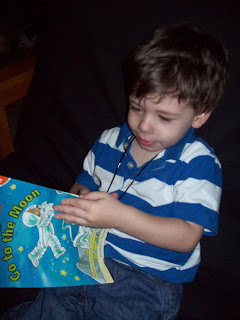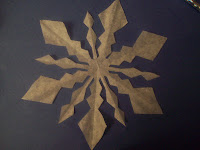Builder Boy made Christmas cards today! I got most of the ideas of Pinterest, and there were even more that we didn't try. Here are links to two blogs with links to a ton of kid-made Christmas cards. It's not to late to make cards for people if you're not mailing them.
Yes, we made tree or light themed cards. Not because we think that should be the focus of Christmas, but because they are the easiest for the kids to make.
 The lights are thumbprints in the basic Crayola washable watercolors that comes in a bar. Builder Boy had trouble making the thumbprints; he kept clenching his thumb against his fist. He really likes making prints, though, so we'll try again sometime.(Here's the Pin for the original idea.) Learning opportunity/review: rainbow order.
The lights are thumbprints in the basic Crayola washable watercolors that comes in a bar. Builder Boy had trouble making the thumbprints; he kept clenching his thumb against his fist. He really likes making prints, though, so we'll try again sometime.(Here's the Pin for the original idea.) Learning opportunity/review: rainbow order. This tree is made of pointer finger prints. The star and the tree stump are thumbprints. (Here's the Pin for the original idea.) Learning opportunity/review: plus one. Each row has one more print than the row above it.
This tree is made of pointer finger prints. The star and the tree stump are thumbprints. (Here's the Pin for the original idea.) Learning opportunity/review: plus one. Each row has one more print than the row above it. I saw the idea on Pinterest to make the strips in the different colors, but now I can't find the Pin. Learning opportunity/review: smallest to biggest (or vice versa.)
I saw the idea on Pinterest to make the strips in the different colors, but now I can't find the Pin. Learning opportunity/review: smallest to biggest (or vice versa.) The last tree we made, Builder Boy cut out three green triangles and then glued them on the paper and added drips from glitter pens I got from the dollar store. (The star is a sticker.)
The last tree we made, Builder Boy cut out three green triangles and then glued them on the paper and added drips from glitter pens I got from the dollar store. (The star is a sticker.)

















































